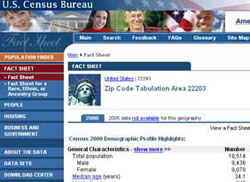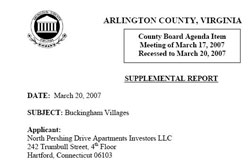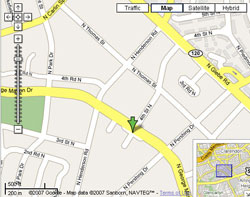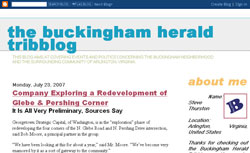Development: Key issueBig dollars usually are at stake. But in many cases these stories are not well covered by the "mainstream press." In other words, they are perfect stories for a CitMedia site. If you do a good job with them, you're sure to build audience. Planning, zoning and development can be hard to follow, full of specialized language and maddeningly arcane bureaucracy and processes. (Another reason they don't get as much coverage as they deserve.) If you are interested in learning more about this topic, here is a tipsheet put together by FACSNET. FACSNET is a program of the Foundation for American Communications and can be a good resource when you need a basic grounding on a subject. The expert lists are helpful, too. Unraveling a storyBest strategy: Answer the simple questionsSometimes it's hard to know where to get started when a story seems to have so many elements. Here's the trick: Break things down to their simplest form. That means, answer the basic questions: Who? What? When? Where? Why? Let's take a look at how this might have worked in the case of a proposed rezoning in the Buckingham Village and Arlington Oaks neighborhoods in Arlington, Va. (Full disclosure: Wendell Cochran lives in Arlington Oaks.) The point of this section isn't to make you a zoning expert, but rather to use a rezoning proposal as a case study on how to approach a story like this, step-by-step.
Who?
 In most every story "who" has many dimensions: Who are the people involved? Who will make the decisions? Who is proposing the rezoning? Who opposes it? Who are some obvious people who will be affected? Who are the less obvious? So start with a simple question: Who lives in Buckingham Village? The Census Bureau is the place to find that information. Here's a table from the American FactFinder, showing data for the ZIP code where Buckingham Village is located. You can see that the table not only includes the area's demographics, but also information about income, education, housing characteristics, and many other variables. Among other things, the report shows that in 2000 this area was much more diverse, racially and ethnically, than most of the U.S. In the data mining section of this module, we demonstrate a Web-based tool that will automatically turn this data into a graphic.
What?
 Details matter. What specifically is being planned? Official documents usually are the best source for this sort of information. There should be reports from the planning commission, zoning board or other bodies responsible for analyzing and making development recommendations. The image at right is the final report made to the Arlington County Board, the county's governing body, which had to approve the Buckingham project. The report specifies the number of units involved, gives the names and addresses of the developers. It also commits the county to spending nearly $50 million to buy and maintain affordable housing units and to build new roads and parks in the area. Another document on the county's Web site outlined the relocation plans for residents who will be affected by the project. Linking to documents like these and then summarizing some of the key points can not only make your site more informative, it also can spark debate and discussion. This post on Buckingham HeraldTriblog, written about the Buckingham Village area, is a good example of using documents as a launching point.
When?
 Another question with multiple dimensions: When will the decision be made? When will construction start? When will residents have to relocate? When will the development be finished? One thing you could do is keep track of when government meetings occur. A good idea would be to get on the press release mailing lists of the government agencies in your area. Most governmental bodies are required by state laws to give notice of meetings and to make agendas available in advance. You will want to be familiar with the open meetings and open records laws in your community. The Freedom of Information Center at the University of Missouri provides links to each state's open meetings laws.
The image at right is a picture of the news release subscription form used by Arlington County. The county also maintains this calendar of meetings and events. (Note: It takes a little while for this to load.) You can customize it to include the meetings you want, as well as subscribe to e-mail updates. The county also provides RSS feeds of meeting agendas and minutes. You might want to build and publish your own calendar of local events and meetings, as well.
Where?
 Zoning is one of those stories that always has a "where" element attached to it. Readers want to know what area is being considered, where the building is, where is it relation to major geographic features, etc. You can easily add a map to your site. In fact, maps have become one of the defining features of the Web, thanks largely to Google maps. Here is a basic Google map of Arlington. Once they are on the map page, users can enter an address in a search window and zoom instantly to a map of the area.To use Google maps, you will need to register your Web site with Google. Google's instructions for doing this are fairly clear. And here is a tutorial to help get you started. The uses for Google maps are limited only by your imagination and programming abilities. A good book for more ways to use Google maps is Google Maps Hacks: Tips and Tools for Geographic Searching and Remixing" by Rich Gibson and Schuyler Erie.  Why?Without a doubt, the most important question for readers is "Why?" or more particularly, "Why should I care?" In other words, explain the impact of these events on individuals in the community. When Steve Thurston, a journalism professor at Montgomery College in Maryland and a resident of Arlington Oaks, realized that the major news outlets in Arlington weren't covering the Buckingham redevelopment extensively, he launched Buckingham HeraldTriblog. Thurston says he thought, "Somebody's got to start covering this." And his motivation, like that of many "hyperlocal" or citizen journalists, is partly personal. "I want to know what's going on. I'm looking at it as homeowner in that neighborhood." He also says he believes, "If I care, others will, too." Of course, he knows not all his neighbors are as caught up in the issue as he is. But, he says that even for them, "I'd like to think I've given them some background on why they might care." As an example, he cites this post showing that some neighborhood residents feel as if they are being harassed by county housing officials over apartment inspections. The focus of the blog has been to explain what is happening, but Thurston's also learned a lot about "why" people should care. For example, the process the county used to make the Buckingham decisions could easily be applied in other nearby neighborhoods. He's gotten reaction, too. He posts several times a week and sends a weekly e-mail reprise of the blog to about 170 subscribers, including workers in the county's planning agencies. The posts get reaction, too. "I'll get an occasional e-mail or … they'll meet me at a meeting and they'll say 'Oh, you're him.'" He thinks the county staff is especially interested in hearing what people in the community are thinking about the process.
|